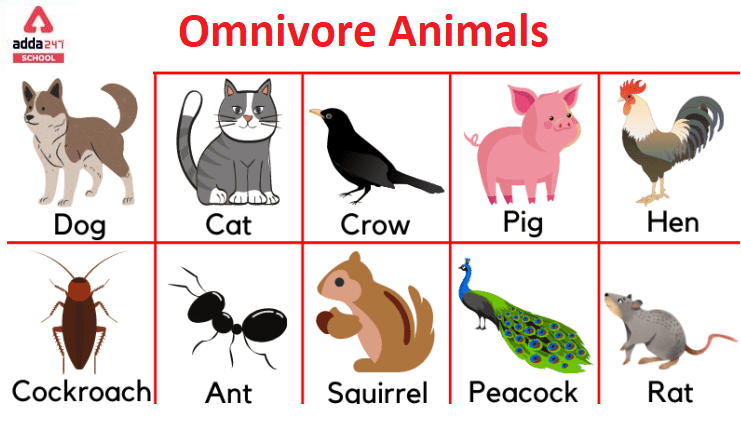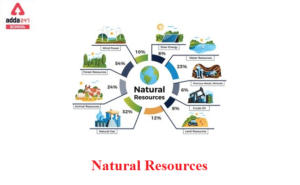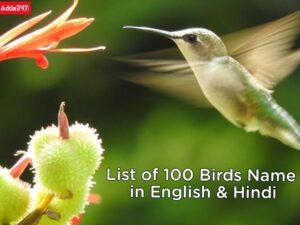Table of Contents
An omnivores animals that can feed and survive on both plant and animal matter and can digest carbs, protein, fat, and fiber while receiving energy and nutrients from both plant and animal materials are called omnivores animals.
Omnivores Animals
Omnivores are animals that eat both plants and animals as their primary food sources. This diverse diet allows them to adapt to a wide range of habitats and ecological niches. Examples of omnivorous animals include bears, humans, many birds such as crows, and some species of fish like piranhas. Omnivores have digestive systems that are capable of processing both meat and plant matter, although the efficiency can vary widely among species. Their teeth and digestive tracts are adapted to handle both types of food; for instance, omnivores typically have flat molars for grinding plant matter and sharper canines for tearing meat.
What are Omnivores Animals?
Omnivores Animals are able to include food sources such as algae, fungi, and bacteria into their diet by metabolizing the nutrients and energy of the sources ingested.
Despite the fact that omnivores come from a variety of evolutionary origins and have often evolved advanced eating abilities separately, physical traits such as tooth morphology may be useful indications of diet in mammals.
omnivores animals are divided into sub-categories by the diversity of animals they eat. Omnivores are divided into three subcategories: frugivores, insectivores, and granivores.
These omnivores animals have higher food security because they are omnivores. It allows such animals, particularly wild ones, to survive even in stressful times or in less constant settings.
omnivores animals can be found in a variety of taxonomic groups. It is common to encounter physiological carnivores taking plant materials or physiological herbivores consuming animal materials, which would classify them as omnivores from a behavioural standpoint. However, this could be due to zoopharmacognosy from a physiological aspect. To be termed omnivorous animals must be able to receive both energy and nutrients from plant and animal sources. For this reason, such creatures can still be classed as carnivores and herbivores.
Omnivorous Animals Name List
Omnivorous animals are species that consume both plant and animal matter as part of their diet. The flexibility of an omnivorous diet allows these animals to obtain nutrients and energy from a wide variety of sources, which can be advantageous in changing environments or when one type of food is scarce. This dietary strategy is contrasted with carnivores that primarily eat meat, and herbivores that eat only plant matter.
Some well-known omnivores include:
Humans: We have a varied diet that includes fruits, vegetables, grains, meat, and dairy.
Bears: While some bear species are more carnivorous or herbivorous, most bears consume a mix of plants, honey, insects, fish, and small mammals.
Pigs: Domesticated and wild pigs consume a mix of roots, fruit, rodents, and small reptiles.
Raccoons: They are adaptable feeders that eat fruits, nuts, insects, eggs, and small animals.
Chickens: Domestic chickens will eat seeds, insects, and small mice if given the opportunity.
Dogs: While domestic dogs are often fed a diet of meat-based pet food, they can also eat grains, vegetables, and fruits.
The teeth of omnivorous animals are usually adapted for their varied diet; for instance, they might have sharp front teeth for tearing meat and flat molars for grinding plant material. Similarly, their digestive systems are equipped to break down both animal proteins and plant fibers, although they are generally not as specialized as those of strict carnivores or herbivores.
Example of Omnivorous Animals
omnivorous animals 10 examples are given below. check omnivorous animals names list here.
- Hominids
- Pigs
- Badgers
- Bears
- Coatis
- Civets
- Hedgehogs
- Opossums
- Skunks
- Sloths
- Raccoons
- Chipmunks
- Rats
- Squirrels
- Dogs
Omnivores Animals Examples
Omnivores include bears, birds, dogs, raccoons, foxes, certain insects, and even humans, and they are a diverse group of animals. Predators hunt other animals, whereas prey are those who are hunted. Omnivores can be both predators and prey because they hunt and are hunted.
In the wild, a variety of mammals are omnivorous. Hominids, pigs, badgers, bears, coatis, civets, hedgehogs, opossums, skunks, sloths, raccoons, chipmunks, and rats are just a few examples. Squirrels, too, are omnivores.
The fact that most bear species are omnivores is well recognised. Individual diets, on the other hand, might range from virtually entirely herbivorous to almost entirely carnivorous. Furthermore, such animals’ particular diets are influenced by the food supplies accessible regionally and seasonally. Polar bears are carnivores, which means they eat meat. Polar bears are both taxonomically and behaviorally carnivores. Furthermore, because plants and animals are processed differently, bears tend to favour one type of diet over another.
The plant matter is consumed by canines such as wolves, dogs, dingoes, and coyotes. They do, however, show a general affinity for meat and are evolutionarily suited to it.
Squirrels, like other arboreal species, are primarily granivores. Animals that eat nuts and seeds are referred to as granivores. Squirrels, like practically all mammals, enjoy eating animal food as well.
A variety of birds are omnivores. Cranes, cassowaries, chickens, crows and related corvids, kea, Rallidae, and rheas are omnivores, eating fruit, nectar, insects, worms, fish, and small rodents.
Also omnivorous are certain lizards and invertebrates.
Mostly herbivorous creatures may frequently eat small amounts of animal food, and omnivorous or herbivorous birds, such as sparrows, will frequently feed their chicks insects, despite the fact that this is inconsequential most of the time. Sunbirds and other nectar-feeding birds, such as hummingbirds, appear to rely on ants and other insects found in flowers.
As a result, rather than a definition, when to refer to such animals as omnivorous or otherwise is a matter of context and emphasis.
What Animals are Omnivores?
All animals have teeth that are adapted to chew specific sorts of food, and herbivores, for example, have powerful and flat molars because they eat plants. Herbivorous animals with small or non-existent canine teeth rely on strong and flat molars to ground leaves. Carnivores, or meat eaters, have sharply defined canine teeth and a small number of molars. Canine teeth are used to shred meat. Omnivores have a combination of sharp front teeth and molars because they eat both meat and plants.
Let’s say, Humans, the obvious omnivores. Meat and plant stuff is among the things we consume. Our own teeth can help us comprehend the wide range of forms and sizes that an omnivore’s teeth can take. Human teeth are not representative of what you’ll find in the mouths of all omnivores, as each omnivore has teeth that are uniquely tailored to the nutrition they eat. Each tooth is designed to perform a specific function in the digestion of the food consumed, and Homodont dentition, which is found in most omnivorous reptiles, happens when all of the teeth are of similar size and shape. These teeth are mostly employed for food acquisition rather than processing.
Omnivores Animals Name in Hindi
एक सर्वभक्षी एक ऐसा जानवर है जो पौधे और पशु दोनों पदार्थों पर भोजन कर सकता है और जीवित रह सकता है और पौधे और पशु सामग्री दोनों से ऊर्जा और पोषक तत्व प्राप्त करते हुए कार्बोस, प्रोटीन, वसा और फाइबर को पचा सकता है। सर्वाहारी खाद्य स्रोतों जैसे शैवाल, कवक और बैक्टीरिया को अपने आहार में शामिल करने में सक्षम हैं, पोषक तत्वों और अंतर्ग्रहण स्रोतों की ऊर्जा को चयापचय करके।
इस तथ्य के बावजूद कि सर्वाहारी विभिन्न प्रकार के विकासवादी मूल से आते हैं और अक्सर अलग से उन्नत खाने की क्षमता विकसित करते हैं, दांतों की आकृति विज्ञान जैसे शारीरिक लक्षण स्तनधारियों में आहार के उपयोगी संकेत हो सकते हैं।
सर्वाहारी जीवों को उनके द्वारा खाए जाने वाले जानवरों की विविधता के आधार पर उप-श्रेणियों में विभाजित किया जाता है। सर्वाहारी को तीन उपश्रेणियों में विभाजित किया जाता है: फ्रुजीवोर्स, कीटभक्षी और दानेदार।
इन जानवरों की खाद्य सुरक्षा अधिक होती है क्योंकि वे सर्वाहारी होते हैं। यह ऐसे जानवरों, विशेष रूप से जंगली जानवरों को तनावपूर्ण समय में या कम स्थिर सेटिंग में भी जीवित रहने की अनुमति देता है।
सर्वभक्षी विभिन्न प्रकार के टैक्सोनॉमिक समूहों में पाए जा सकते हैं। पौधों की सामग्री लेने वाले शारीरिक मांसाहारी या पशु सामग्री का उपभोग करने वाले शारीरिक शाकाहारी लोगों का सामना करना आम बात है, जो उन्हें व्यवहारिक दृष्टिकोण से सर्वाहारी के रूप में वर्गीकृत करेगा। हालांकि, यह एक शारीरिक पहलू से ज़ोफार्माकोग्नॉसी के कारण हो सकता है। सर्वाहारी कहे जाने के लिए, जानवरों को पौधे और पशु स्रोतों से ऊर्जा और पोषक तत्व दोनों प्राप्त करने में सक्षम होना चाहिए। इस कारण से, ऐसे जीवों को अभी भी मांसाहारी और शाकाहारी के रूप में वर्गीकृत किया जा सकता है।
Related Posts:


 Types of Natural Resources with Examples
Types of Natural Resources with Examples
 All 100 Birds Name in Hindi and English
All 100 Birds Name in Hindi and English
 50 Water, Aquatic, Ocean, Sea Animals Na...
50 Water, Aquatic, Ocean, Sea Animals Na...















